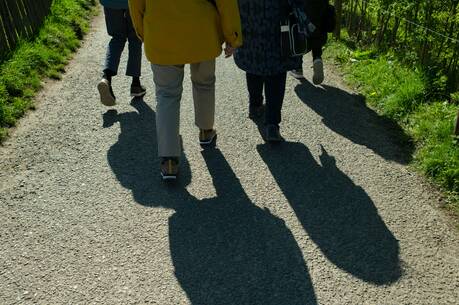Love Is the Answer
There are two great questions in the Easter season. How could the community formed by the earthly Jesus carry on without his physical presence? And what can the church of the 21st century learn from the earliest Christian communities? Last Sunday’s reading from John’s Gospel suggested that the Jesus movement could and did continue by means of a personal and communal relationship with the risen Jesus as the Good Shepherd. Today’s passage from John 13 gives another answer, one that is easy to say but sometimes hard to practice: Love one another.
The scene is Jesus’ last supper with his disciples. He has washed their feet, having demonstrated that salvation is a gift from God that must be accepted on God’s terms. Jesus has witnessed the departure of Judas, who would betray him. Now he faces the prospect of arrest, physical and psychological suffering, crucifixion and death. And yet he proclaims that this is not a defeat or humiliation but rather a victory and exaltation. And so he announces, “Now is the Son of Man glorified, and God is glorified in him.”
The exaltation of Jesus, however, means his physical departure from his first followers. Today’s excerpt from Jesus’ farewell discourse suggests that one way they (and we) can continue the movement Jesus began is by loving one another. The love commandment described in today’s Gospel passage has two dimensions: community and witness.
The communal dimension of Jesus’ love commandment is not limited to human beings. Our community of love has not only a human dimension but also a divine dimension. It has its basis and dynamism in the love that Jesus manifested in his life, death and resurrection. In turn, his love for us is rooted in the Father’s love for him and for us. The Christian community’s practice of love takes its start from God’s love for us. Because we have experienced God’s love in Jesus, we can and should love one another and love God. The practice of Jesus’ commandment evokes the image of a grand spiral of love involving us, the Father, Jesus and those we love.
Witness is the second dimension of Jesus’ commandment to love. One of the most striking and attractive features of the early Christian movement was the love its members showed to one another. It made outsiders inquire about what these people believed and why they acted as they did. The most effective missionary strategy is and always has been the good example of Christians who show their love for God and others in what they do. The practice of Jesus’ love commandment is the most eloquent sign to the world that the movement initiated by Jesus continues in authentic ways.
How Jesus’ love commandment was incarnated by early Christians is illustrated by today’s reading from Acts 14. The early Christians formed a network of persons. The billions of Christians who constitute the churches today descend from a few hundred persons in the Mediterranean world of Paul’s day. Without the faith, zeal and courage of persons like Paul and Barnabas and their co-workers, there would be no churches today. Moreover, the apostles established practical, social and institutional structures for the churches. The “elders,” or presbyters, they appointed were to oversee the life and development of the local Christian community and to carry on what the apostles had begun. Finally the apostles were convinced in their planting and nurturing of new communities of faith that God’s grace was inspiring and empowering them. On returning from Antioch in Syria to the community that had sent them on their mission, they reported “what God had done with them.” Paul and Barnabas perceived themselves not as individual heroes or explorers but rather as instruments of God commissioned to communicate the good news about Jesus Christ. That is what the word “apostle” means.
The love that early Christians showed to God, Jesus and others was inspired by their hope for the fullness of God’s kingdom. The vision of the new Jerusalem captured in today’s excerpt from Revelation 21 features images of the new heaven and earth, a new Jerusalem coming down from heaven and a bride prepared to meet her husband. These images remind us that Jesus’ resurrection at Easter was the beginning of a process that will reach its goal when God’s kingdom is manifested in all its fullness. In the meantime we can and should express our hope for the fullness of God’s kingdom by prayer, striving for greater holiness, working for justice and loving one another. In this way we can recite the words of Jesus’ own prayer with greater comprehension, conviction and confidence, “Thy kingdom come, thy will be done on earth as it is in heaven” (Matt 6:10).
This article also appeared in print, under the headline “Love Is the Answer,” in the April 30, 2007, issue.







